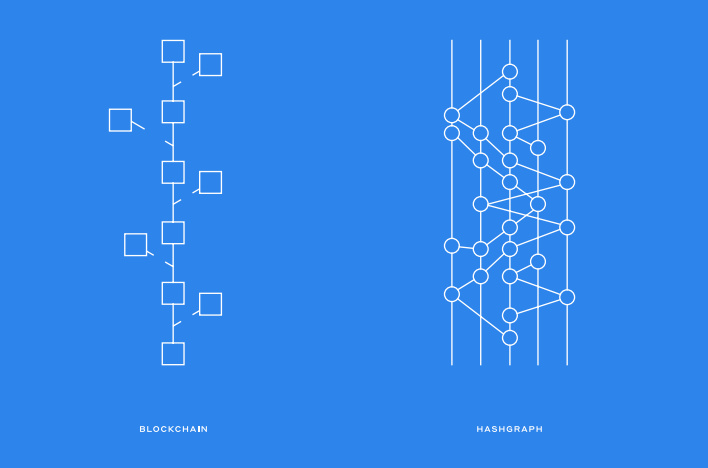Contents
It goes without saying that blockchain is one of the world’s greatest invention we’ve seen this decade. Since we first came to know Bitcoin in 2008, the innovative technology has introduced a whole new monetary system that no one has ever dreamt of before, connecting people from all around the world by utilizing the distributed ledger system on a peer-to-peer network.
For all these years, blockchain is the most well-known and the leading technology adopted in the world of cryptocurrency, despite criticisms on a number of aspects that need to be improved on. In 2018, we were presented with a new technology that claims to fill the gaps of blockchain — Hedera Hashgraph.
What’s so groundbreaking about this technology and how can this noob challenge the throne of blockchain?
What is Hedera Hashgraph?
Proposed by Dr. Leemon Baird, Hashgraph is a new form of distributed consensus algorithm, a variation of a standard blockchain. A peer-to-peer platform that allows users to make transactions without any middlemen, they claim to be able to handle thousands of transactions per second and can verify more than 1 million signatures per second, a number far outruns blockchain.
That’s because Hashgraph uses two unique features to achieve fast and secure transactions: “gossip about gossip” and “virtual voting”.
When it comes to gossiping, nodes are also experts at spreading out information. Every node in Hashgraph can spread signed information (referred to as “events”) on the newly created transactions, as well as the transactions received from other nodes that include the information attached to the hashes of the last two nodes. It is then passed on to randomly chosen neighboring nodes, who will combine these new events with the information they already obtained from other nodes into a new event and spread out. The gossiping process then go on until all the nodes are aware of the transaction information being spread.
After spreading out the gossip, the nodes then analyze the shared history in order to determine a consensus timestamp for all transactions. Hedera Hashgraph uses virtual voting with guaranteed Byzantine fault tolerance to determine whether a transaction is valid or not. Under the gossip about gossip mechanism, it does not require any votes to be sent across the network, they can simply calculate internally by looking the copy they received, the process is hence more efficient and practical, even if a third of the nodes turn Byzantine.
The Blockchain Killer?
So, what’s the catch? Hedera Hashgraph has come a long way since its initial launch in 2018. Now dubbed “blockchain on steroids”, Hedera Hashgraph is developed to supersede blockchain, offering more secure, fairer, and faster transactions through the entirely new consensus algorithm.
Does that mean we can wave goodbye to Proof of Work (PoW) and Proof of Stake (PoW)?

Most blockchains use PoW or PoS systems for their ledgers when recording transactions. As the systems need to handle a massive amount of computational power to process or create a block, the PoW consensus is typically slow and prone to scaling issues, sometimes the blockchain even has to fork in order to maintain its efficiency.
On the contrary, Hedera Hashgraph’s consensus algorithm is far more efficient and lighter than blockchain. Thanks to its gossip protocol, every node calculates the votes internally. By minimizing the weight of each block and the communication between nodes, gossip can spread faster without compromising the transaction information they carry. While Bitcoin and Ethereum can process 7–10 and 15–20 transactions per second respectively, Hashgraph claims to be capable of processing thousands of transactions per second as the information travels exponentially on its network.
But what about Lightning Network?
Also aimed to increase the speed of transactions and the PoW networks, Lightning Network uses Smart Contract to add a second layer on top of the current Bitcoin blockchain. It significantly reduces the block size by only broadcasting the most recently signed balance sheet to the main blockchain after the final settlement takes place. Transactions are hence much more efficient as they are viewed as micropayments stored on the network instead of the blockchain.
Yet recently, Lightning Network faces security concerns as security vulnerabilities have been discovered in its various versions, which might cause users to lose their Bitcoin — the least thing any crypto traders would want.
Compared to blockchain and Lightning Network, Hedera Hashgraph delivers a lower cost and way higher performance without the typical Byzantine fault nor security holes.
Hashgraph also proves to be fairer than blockchain when it comes to validating transactions. Since blockchain miners can manually put transactions into their blocks, they can give preference to transactions, such as re-ordering or pushing the ones they have more interest in. Although each transaction is attached to a certain amount of fee, blockchain allows miners to pay a higher fee if they want to cut the line. In Hashgraph, no node can decide the order for transactions and the event timestamps will automatically get the job done for you, denying any form of manipulation in the ledger.
After all, the journey of Hedera Hashgraph has just started, but no doubt that it is an extremely intriguing technology dedicated to solving issues in the current decentralized networks. Will it be a game-changer that could potentially exceed blockchain as it continues to build on the technology?
Hedera Hashgraph (HBAR) Global Debut on OKEx
OKEx is delighted to announce that we will be one of the first exchanges to list Hedera Hashgraph (HBAR)! The go-live schedule is as follows:
- Deposits: 04:00 Sep 16, 2019 (CEST, UTC+2)
- Trading pairs HBAR/BTC, HBAR/USDT, and HBAR/USDK: 04:00 Sep 17, 2019 (CEST, UTC+2) (time may change if the stability of the network is not assured)
- Withdrawal: 04:00 Sep 24, 2019 (CEST, UTC+2)
Experience the power of Hedera Hashgraph on OKEx!
OKEXより転用







